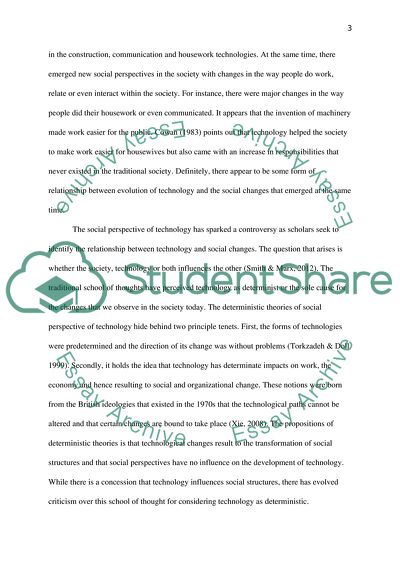Cite this document
(How does the social shaping perspective help us to understand the Essay - 1, n.d.)
How does the social shaping perspective help us to understand the Essay - 1. https://studentshare.org/social-science/1856257-how-does-the-social-shaping-perspective-help-us-to-understand-the-social-and-organizational-implications-of-technological-change-answers-should-draw-on-either-ruth-schwartz-cowans-account-of-the-industrialisation-of-housework-or-janet-abbates-work
How does the social shaping perspective help us to understand the Essay - 1. https://studentshare.org/social-science/1856257-how-does-the-social-shaping-perspective-help-us-to-understand-the-social-and-organizational-implications-of-technological-change-answers-should-draw-on-either-ruth-schwartz-cowans-account-of-the-industrialisation-of-housework-or-janet-abbates-work
(How Does the Social Shaping Perspective Help Us to Understand the Essay - 1)
How Does the Social Shaping Perspective Help Us to Understand the Essay - 1. https://studentshare.org/social-science/1856257-how-does-the-social-shaping-perspective-help-us-to-understand-the-social-and-organizational-implications-of-technological-change-answers-should-draw-on-either-ruth-schwartz-cowans-account-of-the-industrialisation-of-housework-or-janet-abbates-work.
How Does the Social Shaping Perspective Help Us to Understand the Essay - 1. https://studentshare.org/social-science/1856257-how-does-the-social-shaping-perspective-help-us-to-understand-the-social-and-organizational-implications-of-technological-change-answers-should-draw-on-either-ruth-schwartz-cowans-account-of-the-industrialisation-of-housework-or-janet-abbates-work.
“How Does the Social Shaping Perspective Help Us to Understand the Essay - 1”. https://studentshare.org/social-science/1856257-how-does-the-social-shaping-perspective-help-us-to-understand-the-social-and-organizational-implications-of-technological-change-answers-should-draw-on-either-ruth-schwartz-cowans-account-of-the-industrialisation-of-housework-or-janet-abbates-work.


